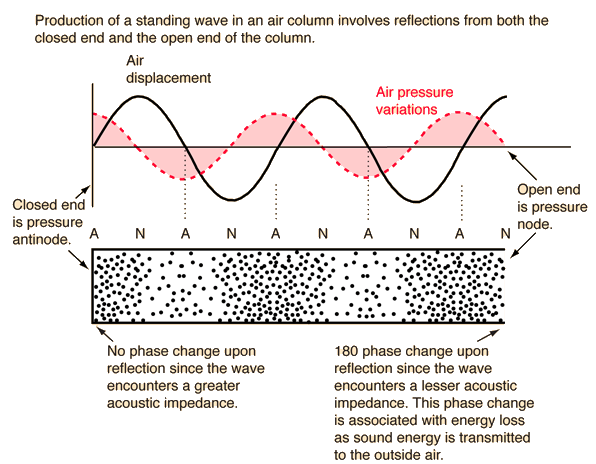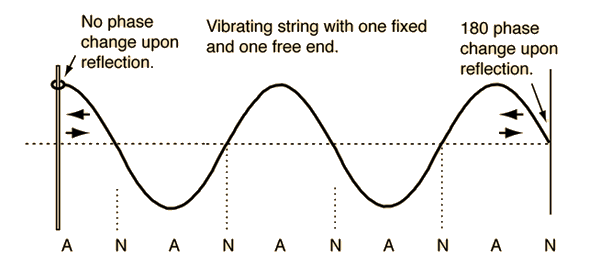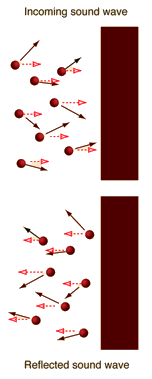Reflection of Sound
The reflection of sound follows the law "angle of incidence equals angle of reflection", sometimes called the law of reflection. The same behavior is observed with light and other waves, and by the bounce of a billiard ball off the bank of a table. The reflected waves can interfere with incident waves, producing patterns of constructive and destructive interference. This can lead to resonances called standing waves in rooms. It also means that the sound intensity near a hard surface is enhanced because the reflected wave adds to the incident wave, giving a pressure amplitude that is twice as great in a thin "pressure zone" near the surface. This is used in pressure zone microphones to increase sensitivity. The doubling of pressure gives a 6 decibel increase in the signal picked up by the microphone. Reflection of waves in strings and air columns are essential to the production of resonant standing waves in those systems.

| Examples of reflection | Plane wave, plane surface | Point source, plane surface | Point source, concave surface |
Traveling wave concepts
Sound propagation concepts
| HyperPhysics***** Sound | R Nave |



